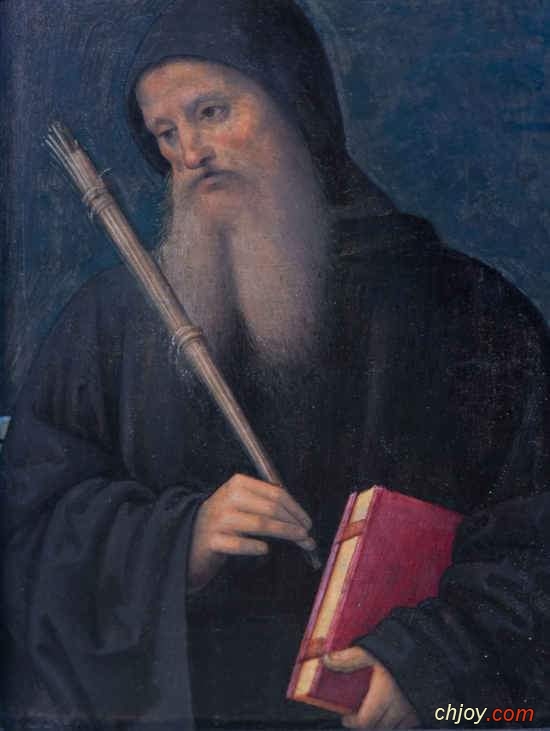
 |
 |
 |
 |
|
رقم المشاركة : ( 1 )
|
|||||||||||
|
|||||||||||
|
القديس بنديكتوس مؤسّس الرهبانية في الغرب/15 آذار  وُلِدَ هذا القدِّيس العظيم في إيطاليا سنة 480 وهو سليل أسرة شريفة غنيّة وتقيّة . فأرسله والده إلى روما لاقتباس العلوم فبرع فيها . لكن ما كان يراه من سوء السّلوك في رفقائه ومن المفاسد والشّرور في تلك العاصمة ، دفعه إلى تركها والرّجوع إلى بيت أبيه. وما لبث أن عقد النيَّة على الزّهد في الدنيا، وهو في الرّابعة عشرة من العمر. فانسل ذات يوم من بيت أبيه ، سرًا تاركًا ما فيه من ثروة ونعيم ليكون بكلّيته لله في العزلة والإنفراد. فسار في الجبل حيث التقى براهب قدّيس اسمه رومانوس، سأله قصده، فأبدى له عن رغبته في التنسّك فألبسه الإسكيم الرّهباني. فقام بنديكتوس يناجي الله في خلوته السّعيدة، ممارسًا الصّلوات والأصوام مدّة ثلاث سنوات، حتى تسامى بالكمال. فاشتهرت قداسته عند المجاورين لمنسكه. واذ كان ابليس يجرّبه كان يطرح ذاته على الأشواك، إلى أن تفارقه التجربة. وقد خاض هذه المعركة مرارًا، حتى انتصر أخيرًا انتصارًا باهرًا فمنحه الله عفـَّة ملائكيّة مدى الحياة. فقصده الكثيرون يرغبون في الإقتداء بسيرته، منهم الشابّان تلميذاه موريس وبلاسيّد. ولمّا كثر عدد تلاميذه، أنشأ لهم اثني عشر ديرًا. وكان هو يرشدهم ويهتمّ بأمورهم. وفي سنة 530 أوحى الله إليه أن يذهب إلى جبل عال منفرد يدعى جبل كاسينّو، حيث بنى الدّير الرئيسيّ للرّهبانيّة البندكتيّة. وقد وضع قانونًا مشهورًا لرهبانه، يشفّ عمّا في تلك النفس الأبيّة المتحدة بالله. ثمّ انتقل إلى رحمته تعالى في 12 اذار سنة 547 بعد أن قضى في ديره في جبل كاسينّو نحو ثلاث عشرة سنة. وبعد موته، انتشرت رهبانيّته وأديرتها في جميع الاقطار. وقدَّمت للكنيسة وللإنسانيّة وما زالت، خدمًا جليلة كبيرة. وكان من رهبانه باباوات عظام، وقدِّيسون، وأساقفة كثيرون، وعلماء قد أفادوا الكنيسة وشرّفوها بسامي فضائلهم، وغزير علومهم. صلاته معنا. Saint Benedict Benedict was born into a distinguished family in central Italy, studied at Rome, and early in life was drawn to monasticism. At first he became a hermit, leaving a depressing world—pagan armies on the march, the Church torn by schism, people suffering from war, morality at a low ebb. He soon realized that he could not live a hidden life in a small town any better than in a large city, so he withdrew to a cave high in the mountains for three years. Some monks chose Benedict as their leader for a while, but found his strictness not to their taste. Still the shift from hermit to community life had begun for him. He had an idea of gathering various families of monks into one “Grand Monastery” to give them the benefit of unity, fraternity, and permanent worship in one house. Finally he began to build what was to become one of the most famous monasteries in the world—Monte Cassino, commanding three narrow valleys running toward the mountains north of Naples. The Rule that gradually developed prescribed a life of liturgical prayer, study, manual labor, and living together in community under a common abbot. Benedictine asceticism is known for its moderation, and Benedictine charity has always shown concern for the people in the surrounding countryside. In the course of the Middle Ages, all monasticism in the West was gradually brought under the Rule of St. Benedict. Today the Benedictine family is represented by two branches: the Benedictine Federation encompassing the men and women of the Order of St. Benedict; and the Cistercians, men and women of the Order of Cistercians of the Strict Observance. |
 |
|